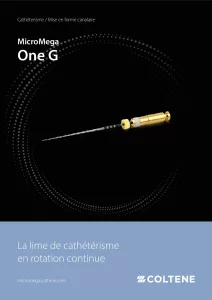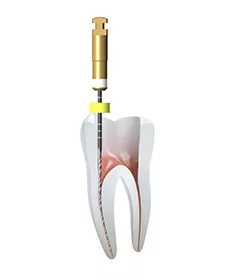
Télécharger le flyer
La lime NiTi One G de cathétérisme en rotation continue, stérile et à usage unique.
Le cathétérisme est une étape essentielle et indispensable de la préparation canalaire. La phase d’exploration initiale se réalise à l’aide d’une lime manuelle. Dans les cas de canaux difficiles (étroits, calcifiés, courbures importantes, etc.), lorsque la perméabilité est difficile à obtenir et que les limes manuelles ne suffisent pas, One G est un allié majeur.


Publicité – CE 0459. Classe médicale IIA selon directive 93/42/CEE. Organisme certificateur : GMED. Dispositif médical pour soins dentaires, réservé aux professionnels de santé, non remboursé par la Sécurité Sociale. Voir l’étiquetage du produit, et le cas échéant, la notice. Fabricant Micro-Mega SA.
Bonjour et bienvenue sur le site MICRO-MEGA® !
Dans le cadre de la nouvelle charte pour la communication et la promotion des produits de santé (médicaments et dispositifs médicaux) sur Internet et le e-media, cette page est exclusivement réservé et uniquement accessible aux professionnels de santé.
Etes-vous un professionnel de santé ?